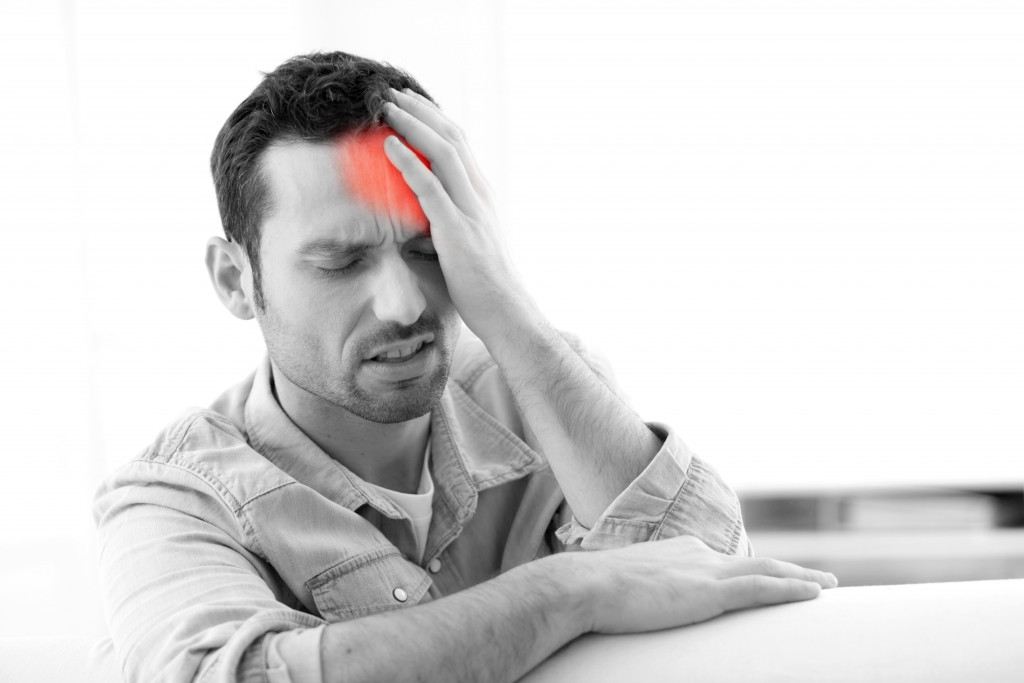Bumps on the head are everyday occurrences and usually nothing to worry about when it is mild. However, if you get bumped on the head, you have a few things to consider.
The likelihood of getting your head bumped is high. A study by the Centers for Disease Control and Prevention (CDC) found that more than 2.8 million people visit the emergency room yearly due to head injuries. Of those, nearly 50,000 people die from their injuries.
Many factors contribute to the risk of a head injury, including age, sex, and activity level. Children are more likely to get injured than adults, and men are more likely to get injured than women. Activities involving contact or collisions, such as sports or riding a bike, also increase your risk of a head injury.
No matter what age or gender, you must take head bumps seriously. Here are a few steps to take if you or someone you know gets a head injury.
Medical Evaluation
If you get a bump on the head, it is essential to evaluate your condition. This step includes checking for any bleeding and symptoms of concussion.
Bleeding can be severe if not treated properly. If you are bleeding, put pressure on the wound to stop the bleeding. If the bleeding doesn’t stop, go to the hospital.
Symptoms of concussion include confusion, dizziness, headache, difficulty concentrating, or feeling drowsy. If you have any of these symptoms, seek medical attention.
You should also see a doctor if you hit your head and lose consciousness, even if it is just for a few seconds. A concussion can occur even if you don’t lose consciousness. If someone else is in the room, you can find ways to help them.
If you don’t have any severe symptoms, you can wait and see how you feel. Most bumps on the head will go away on their own. However, it is still a good idea to keep an eye on your condition and watch for any changes.
Rest Your Head

If you have a head injury, it is essential to get plenty of rest. This strategy will help your body heal and reduce the risk of further injury.
You should avoid physical activity and give your body time to recover. This step includes working out, running, or playing sports. You should also avoid mental efforts requiring much concentration, such as reading or watching television.
Sleep is also essential for recovery. Aim to get at least eight hours of sleep each night. Take it easy for a few days after your injury, and gradually increase your activity level as you start to feel better.
It is also essential to monitor your symptoms after a head injury. This step includes checking for any changes in your symptoms and watching for new signs. If your symptoms get worse, seek medical attention.
Follow-Up Care
If you have a head injury, you may need to follow up with your doctor to ensure you are healing correctly. It can include a physical examination and neurological tests.
You may also need imaging tests, such as an MRI or CT scan, to check for internal damage. These tests are usually only required if you have severe symptoms or aren’t improving. However, you might feel claustrophobic during the procedure since you will be in a small space for an extended period. Fortunately, Upright MRI can provide an open MRI that can help alleviate this feeling.
Depending on the severity of your injury, you may also need to see a specialist, such as a neurologist or neurosurgeon.
Recovery
Most people recover fully from a head injury within a few days to weeks. However, some people may have long-term effects, such as difficulty concentrating or mood changes.
If you have a concussion, it is essential to rest and give your brain time to heal. This step includes avoiding activities that could potentially worsen your symptoms. You should also avoid alcohol and drugs, as they can interfere with recovery.
If you have any other injuries, such as a broken bone, you must follow your doctor’s instructions for treatment.
Following up with your doctor after a head injury is also essential. This can help ensure that you are healing correctly and help catch any potential problems early.
Protection will also help you avoid future injuries. This step includes wearing a seatbelt when driving and a helmet when participating in activities such as biking or skateboarding.
You can also reduce your risk of head injuries by ensuring your home is safe. This includes removing potential hazards, such as loose rugs or electrical cords.
Final Thoughts
If you have a head injury, it is vital to seek medical attention if you have any severe symptoms. Most head injuries will heal independently, but monitoring your symptoms and follow-up with your doctor is still essential. You can also reduce your risk of future head injuries by taking steps to protect yourself.


